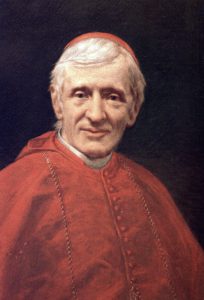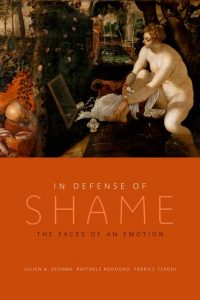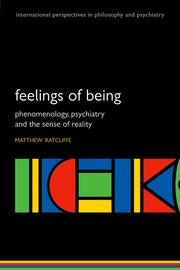This interview with Jan Plamper was originally published in Kritika: Explorations in Russian and Eurasian History 18, no. 3 (2017): 453–60 and is posted here with their permission. You can read the original on Kritika’s website.
Jan Plamper, Professor of History at Goldsmiths, University of London, was among the first scholars in Soviet and Russian history to engage the burgeoning field of the history of emotions.
Trained in history at Brandeis University and the University of California, Berkeley, Plamper is perhaps best known for The Stalin Cult: A Study in the Alchemy of Power (2012), a book that grew out of his PhD dissertation.[1] His first forays into the history of emotions began around 2003, with a project, still ongoing, about fear among soldiers in World War I. In those years, Plamper helped organize a series of conferences and conference panels dedicated to the history of emotions, resulting in three collective publication ventures: a special issue of Slavic Review and two co-edited volumes, Rossiiskaia imperiia chuvstv: Podkhody k kul´turnoi istorii emotsii (In the Realm of Russian Feelings: Approaches to the Cultural History of Emotions) and Fear: Across the Disciplines.[2] Plamper also organized and participated in two printed round tables with leading participants in the emotions field: Peter Stearns, Barbara Rosenwein, William Reddy, Nicole Eustace, Eugenia Lean, and Julie Livingston.[3]
As early as 2009, Plamper could point to a large set of imperial Russian and Soviet historians who made active use of emotions as a historical category in print: Mark D. Steinberg, Catriona Kelly, Sheila Fitzpatrick, Árpád von Klimó, Malte Rolf, Ronald Grigor Suny, Glennys Young, and Alexander Martin.[4] Since then, the field has expanded considerably, with historians continuing to find use in interdisciplinary approaches, drawing from anthropology, sociology, psychology (including neuroscience), and philosophy.[5] Yet no Russian or Soviet historian has gone farther in investigating the history of emotions—and the history of the history of emotions—than Plamper himself, whose German-language monograph was translated into English as The History of Emotions: An Introduction.[6]
Plamper’s leading role in developing the history of emotions in the Russian/Soviet context and his personal experience as an interlocutor among the academic cultures of four countries—the United States, Russia, Germany, and Britain—make him a perfect person to discuss these issues. Alongside his current work on fear in World War I, Plamper is writing a popular history of migration to West and East Germany after World War II. The book concentrates on the life stories of individuals to capture the experiences of various groups and generations of immigrants, ultimately aiming to furnish a “usable past” for the new Germany emerging from the Syrian refugee crisis.
* * *
Though the phrase “history of emotions” has become dominant in designating a new scholarly field in Anglophone literature, historians have also used various other terms to designate their topics: most notably, feeling and affect. Does the choice of term matter, or are we playing with words?
“Emotions” is the best choice, because it includes dimensions of appraisal, signification, object-directedness, and consciousness—what these dimensions mean will become clear in a moment. “Emotions” can be replaced by “feelings,” terms that are synonymous in current English. By contrast “affects,” especially in affect theory—a cross-disciplinary field in cultural, literary, visual, and so on studies—have come to designate nonconscious, nonsignified, inchoate states that are neither directed at an object (fear of what?) nor subject to volition or evaluation.[7] In the classroom I demonstrate the difference between emotion/feeling and affect by suddenly clapping my hands. The milliseconds it takes my students to evaluate the audial stimulus of my clapping hands and to determine that it does not pose a threat to their survival are the time in which affect is operative: their bodies are on high alert, their pupils dilate, their hearts race; they cannot yet think, let alone articulate verbally what their bodies are doing, what they are feeling. Or to use the classic example of the encounter with a snake in the woods, in affect theory the snake is a stimulus per se, constituting a threat to my life because it posed a threat in the distant past. It is an evolutionary vestige. It activates the amygdala in the old, limbic part of my brain. It is nonsignifying; it is not connected to a sexual-biographical episode in my own life, as Freudians might have it (representing, for instance, the penis with which my uncle raped me when I was a ten-year-old). Nor does my appraisal or attention play any role—the fact that I have been a snake lover since visiting the terrarium at the Boston Zoo as a seven-year-old.
Now, as you say, the question is, whether the choice of terms matters for historians. Do we need to define emotion? Can we not just use “perturbations of the soul,” “passions,” “affections,” whichever metaterminology people in the past used to talk about their feelings? The gut reaction you will encounter among a lot of historians—let’s call them vulgar social constructionists—is, “oh well, let us use the terms historical actors used, we do not need a metadefinition.” But how, then, can we do history, how can we designate something that is stable and study its changes across time? How can we track—for instance, in a lexical conceptual history (Begriffsgeschichte)—the shift in meaning of the word boiazn´ in Slovar´ russkogo iazyka XVIII veka and strakh in the third edition of Bol´shaia sovetskaia entsiklopediia without assuming a core commonality between these terms?[8] Without that commonality we cannot trace any “shifts” or “changes”: these presuppose the existence of a single metaconcept. We can only speak of two radically disparate words that refer to radically different things.
In short, with history as currently practiced—I word this carefully because I am not making an absolute claim, only a claim about the current conventions of history, which may well change in the future—we need a referent outside language. Consider Carla Hesse here: “realism, as a philosophical stance, is a necessary foundation for any empirical claim to be able to reconstruct facts from evidence and to claim that language (and more broadly any system of signification—visual, textual or aural) has a denotative as well as a connotative function. That language is at some level referential (that it refers to something outside itself, albeit contingently) is critical, moreover, if one is to be able to make sustainable general claims—about culture, or about any other aspect of human existence.”[9] So we are back at the old issue of nominalism: history, as practiced today, is antinominalist. And so yes, we are playing with words, but all play is serious business.
In the introduction to your co-edited volume Fear: Across the Disciplines, you appear to call into question whether indeed a feeling or experience such as fear can be “understood as a stable, enduring experience across time” (10). Does it make sense for historians to write the history of states of mind such as fear, anger, or shame across decades or centuries? Or can we at best hope to study their influence or cultural valence at specific points in time?
The question is, with due respect, mal posée, and this criticism applies to Ben and myself when we wrote what you cite in our Fear volume. This is a good opportunity to show with concrete examples what I mean by antinomalism in my response to the first question. The problem is with “at best”—we here have a dichotomy of experience (states of mind) and expression (influence or cultural valence), a dichotomy that usually goes along with adjectives like “real” on the experience side, localizations “deep inside” the body, and the idea that this is pure, true subjectivity, where I am truly “I” (you don’t know my feelings!) and dissimulation, “display rules,” “mere” social norms, and the like on the other side. Ultimately it goes back to the nature vs. culture dichotomy that emerged in the 18th century. As so many have shown, this dichotomy is obsolete, the two are not separate (and were not separate before the 18th century), and its intellectual bequest is toxic. Recovering its holistic roots and assailing it with certain strands of philosophy or Bill Reddy’s emotive (which holds that emotional utterances are both constative and performative, that they both describe and change the world: when I say “I am happy” I describe a state and exact a change on this state) allows us to move beyond the dichotomy.[10] Cultural valences have feedback loop effects on “states of mind”; the two are inextricably intertwined.
You began research on the history of the emotions over a decade ago, around 2003, and have been active in drawing scholarly attention to the history of emotions ever since. What prompted your original interest in this field?
A couple of things came together. I was living in Germany, and this was an area where German scholars were for once part of the international historiographical avant-garde—with Begriffsgeschichte and Alltagsgeschichte being the other two major conceptual contributions to a discipline conceptually dominated since 1945 by Anglo-American, French, Italian (microhistory), Indian (postcolonial, subaltern), and a few more debates. I was struggling with all kinds of estrangement and adaptation effects (after 11 years outside Germany), and it seemed attractive to join a conversation that extended beyond the subdisciplinary confines of Osteuropäische Geschichte. Second, I started working on war, and fear plainly stood out. Third, I was at a phase in my life (call it a crisis, perhaps a midlife crisis) where few things titillated me and I was drawn to the visceral, as sick as this may sound. (Today I am horrified when reading the soldier first-person accounts, one of the reasons why I keep escaping from my book project.) Connected with that was the promise of the history of emotions: a less discursive gateway to the past, a more “real” access. That promise, by the way, is also the promise of the history of the senses. The promise is elusive, I have come to believe—not in the sense that we will not attain it but in the sense that the dichotomy that underpins it is falsely constructed: discourse/language/mediation vs. raw experience, emotional expression vs. emotional experience, the former exterior to the body, the latter situated within the body (deep inside she felt …). I believe for the history of emotions to be not another fad, yet another “turn,” it must not just deliver empirically, show how it is actually “applied,” but also hammer home the futility of this dichotomy and develop holistic conceptual language that leaves it behind. More generally speaking, there seems to be too much to do, especially in our “post-truth” age of “felt” and “alternative facts.” There is a real need for serious analysis of the emotional dimension of current politics.
When I entered the history of emotions field, it fascinated me that you could come up with a concept and see it cited almost instantly. That was very different from established, saturated fields. I think this partly explains why nobody ever found it strange that a historian of Russia wrote a general book on the new history of emotions. Incidentally, it would be worth considering in greater depth in Kritika the historians who have Russianist backgrounds and came to lead non-Russian fields: David Christian’s Big History comes to mind.[11]
In your The History of Emotions you offer a history of the history of the emotions, a critique of current historical literature on emotions, and a history of scientific writing on emotions. One of your criticisms of recent historical investigations of emotions is of the way in which historians use and have used science, particularly neuroscience. You note that some historians, like Dror Wahrman, readily admit to lacking a background that would allow them to draw on this literature responsibly: “ ‘A more serious obstacle is the fact that historians lack the critical tools for the evaluation of biological and medical discoveries. I myself, for example, am unable to tell whether what I have written here about the findings of neuro-physiological research is correct, controversial or total nonsense.’” [12] Is it appropriate for historians to make use of findings in neuroscience? Where do the limits of productive interdisciplinarity lie?
I believe there is indeed potential for productive cross-pollination, but the danger is—or was, the neurohype seems past its peak—that humanities scholars would latch on to scientific findings that turn out to be false. And by “false” I mean false. Saying that scientific findings are also culturally constructed does not help, because humanities scholars are looking for universal, robust truths from the sciences in the first place, and if the scientific findings turn out to be wrong, entire edifices built on them crumble. So it will take becoming truly conversant with science—experimental designs; sample sizes; internal, external, and ecological validity, and so on (meta-analyses are always the best place to start; a meta-analysis is a survey of more specialized studies). It took me about three years to gain some literacy with regard to major hypotheses in affective neuroscience: mirror neurons, Joseph LeDoux’s two roads to fear, Antonio Damasio’s somatic marker hypothesis, all three of which are now considered pretty much defunct. By the way, hypotheses are just that, nothing more and nothing less (they are tested over and over, and if they do not furnish the same results under the same experimental conditions, they are wrong, something that happens all the time in the sciences and over which scientists lose no sleep). Now it can be done; it is not quantum physics—in fact, my respect for various disciplines has changed, with the history of science and literary scholarship (including its time-honored “philological” methods, its attention to metaphor, narrative, etc.) moving to the top. I needed three years to become conversant with only a few hypotheses; it is difficult to really follow just these and humanly impossible to follow all of “experimental psychology” (including affective neuroscience) on emotions. Also, I had a privileged position to get into the neurosciences, working at Ute Frevert’s Max Planck Center for the History of Emotions alongside experimental psychologists, including a developmental psychologist (developmental psychologists are interested in individuals across the lifespan; they do not universalize college student test subjects to make statements about infants and octogenarians alike) who started using neuroscience methods and got an fMRI scanner while I was there. There was a lot of productive friction between experimental psychologists and historians. For those fellow Russianists who have neither these conditions nor the time, I recommend thinking twice before getting into the neurosciences. Actually, my advice is to steer clear for the time being. I know there’s a double bind here: I say this having done it, having proven that it is possible, only to then tell other historians to stay out of neuroscience.
You have organized and participated in conferences and panels about the history of the emotions in the United States, the United Kingdom, Germany, India, and Russia. In your experience, how do cultural contexts influence the manner in which historians approach emotions as a category of analysis?
For example, it would be interesting to hear how the 2012 American Historical Review (AHR) conversation compared with the conversations you participated in during the 2008 conference on “Emotions in Russian History and Culture” in Moscow, the debates you took part in at the Max Planck Center for the History of Emotions in Berlin, or the 2008 Workshop at Princeton, “Fear: Multidisciplinary Perspectives.” Could the conversations that took place in Berlin have occurred at Princeton? Why or why not?
An interesting question. My initial impulse was to downplay cultural specificity, given how transnational and small the field is and given how hybridic or diasporic many of us are these days, but on second thought there is a “there” there. In Germany, for instance, it quickly became apparent that the history of emotions, especially when it talks about social aggregates and collective feelings, opens a backdoor for “mentality” and ultimately “national character.” At public events, my colleagues and I noticed that the history of emotions unintentionally attracted some very strange bedfellows, including ultraconservative psychologists who argue for the epigenetic, transgenerational transmission of war trauma (e.g., the bombing of Dresden) from those Germans who lived through the war to their children and grandchildren: my generation’s depression, inertia, and unwillingness to found start-ups and to produce enough children for the nation’s demographic survival—in short, our German angst—are purportedly all due to that inherited trauma.[13]
In Russia, the history of emotions seems to attract people interested in “subjective” (as opposed to “objective,” “scientific”) history: for our 2008 Moscow conference we got an abstract from an astrologer in Kamchatka. In India, the history of emotions is seen by many as a fruitful new approach to better understand communal violence among Hindus, Muslims, and others.[14] The United States is the only country I know where a medievalist historian would mobilize experimental emotions psychology and the neurosciences, arguing: “In an age when biblical literalism is on the rise, when presidents doubt the truth of evolution, when the teaching of evolutionary biology in the United States is being dumbed down and school boards talk seriously about creation science and intelligent design, it is all the more important for historians to support their colleagues in the biological sciences.”[15] Unthinkable in secular Europe!
[1] Jan Plamper, The Stalin Cult: A Study in the Alchemy of Power (New Haven: Yale University Press, 2012), published in Russian as Ian Plamper, Alkhimiia vlasti: Kul´t Stalina v izobrazitel´nom iskusstve, trans. Nikolai Edel´man (Moscow: Novoe literaturnoe obozrenie, 2010), and in Polish as Jan Plamper, Kult Stalina: Studium alchemii władzy, trans. Piotr Chojnacki (Warsaw: Świat Książki, 2014).
[2] Jan Plamper, ed., “Emotional Turn? Feelings in Russian History and Culture,” special issue of Slavic Review 68, 2 (2009); Plamper, Shamma Shakhadat [Schamma Schahadat], and Mark Eli [Marc Elie], eds., Rossiiskaia imperiia chuvstv: Podkhody k kul´turnoi istorii emotsii (Moscow: Novoe literaturnoe obozrenie, 2010); Plamper and Benjamin Lazier, eds., Fear: Across the Disciplines (Pittsburgh: University of Pittsburgh Press, 2012).
[3] “The History of Emotions: Interview with William Reddy, Barbara Rosenwein, and Peter Stearns,” History and Theory 49, 2 (2010): 237–65; Jan Plamper, participant, “AHR Conversation: The Historical Study of Emotions,” American Historical Review 117, 5 (2012): 1487–1531.
[4] Jan Plamper, “Emotional Turn? Feelings in Russian History and Culture,” Slavic Review 68, 2 (2009): 232–33; Mark D. Steinberg, Proletarian Imagination: Self, Modernity, and the Sacred in Russia, 1910–1925 (Ithaca, NY: Cornell University Press, 2002); Catriona Kelly, Refining Russia: Advice Literature, Polite Culture, and Gender from Catherine to Yeltsin (New York: Oxford University Press, 2001); Sheila Fitzpatrick, “Happiness and Toska: An Essay in the History of Emotions in Pre-War Soviet Russia,” Austrialian Journal of Politics and History 50, 3 (2004): 357–71; Árpád von Klimó and Malte Rolf, “Rausch und Diktatur,” Zeitschrift für Geschichtswissenschaft, no. 10 (2003): 877–95; Glennys Young, “Emotions, Contentious Politics, and Empire: Some Thoughts about the Soviet Case,” Ab Imperio, no. 2 (2007): 113–51; Alexander Martin, “Sewage and the City: Filth, Smell, and Representations of Urban Life in Moscow, 1770–1880,” Russian Review 67, 2 (2008): 243–74. Suny’s first printed contribution on the history of emotions appeared only in 2010 as Ronal´d Grigor Suni [Ronald Grigor Suny], “Affektivnye soobshchestva: Struktura gosudarstva i natsii v Rossiiskoi imperii,” in Rossiiskaia imperiia chuvstv, 78–114. An earlier piece by Suny, “Why We Hate You: The Passions of National Identity and Ethnic Violence,” was published in the spring of 2004 in the Berkeley Program in Eurasian and East European Studies BPS Working Paper Series. The 2010 article was followed by Suny, “Thinking about Feelings: Affective Dispositions and Emotional Ties,” in Interpreting Emotions in Russia and Eastern Europe, ed. Mark D. Steinberg and Valeria Sobol (DeKalb: Northern Illinois University Press, 2011), 116–23.
[5] See, e.g., Andrei Zorin, Poiavlenie geroia: Iz istorii russkoi emotsional´noi kul´tury kontsa XVIII–nachala XIX veka (Moscow: Novoe literaturnoe obozrenie, 2016).
[6] Jan Plamper, Geschichte und Gefühl: Grundlagen der Emotionsgeschichte (Munich: Siedler, 2012), published in English as Plamper, The History of Emotions: An Introduction, trans. Keith Tribe (New York: Oxford University Press, 2015).
[7] For examples, see Brian Massumi, ed., A Shock to Thought: Expression after Deleuze and Guattari (London: Routledge, 2002); Massumi, Parables for the Virtual: Movement, Affect, Sensation (Durham, NC: Duke University Press, 2002); William E. Connolly, A World of Becoming (Durham, NC: Duke University Press, 2011); John Protevi, Political Affect: Connecting the Social and the Somatic (Minneapolis: University of Minnesota Press, 2009); Steven Shaviro, Post-Cinematic Affect (Winchester: Zero Books, 2009). But see also Michael Hardt and Antonio Negri, Multitude: War and Democracy in the Age of Empire (New York: Penguin Books, 2005); Hardt, “Affective Labor,” Boundary 26, 2 (1999): 89–100; and Hardt, “Foreword: What Affects Are Good For,” in The Affective Turn: Theorizing the Social, ed. Patricia Ticineto Clough and Jean Halley (Durham, NC: Duke University Press, 2007), ix–xiii. My thinking has been shaped by Ruth Leys’s devastating critique of affect theory. See Ruth Leys, “The Turn to Affect: A Critique,” Critical Inquiry 37, 3 (2011): 434–72, and the ensuing discussion: Connolly, “Critical Response I: The Complexity of Intention,” Critical Inquiry 37, 4 (2011): 791–98; Leys, “Critical Response II: Affect and Intention. A Reply to William E. Connolly,” Critical Inquiry 37, 4 (2011): 799–805; and Leys, The Ascent of Affect: Genealogy and Critique (Chicago: University of Chicago Press, 2017).
[8] Slovar´ russkogo iazyka XVIII veka (Leningrad: Nauka, 1984), 118; Bol´shaia sovetskaia entsiklopediia, 3rd ed. (Moscow: Sovetskaia entsiklopediia, 1976), 24, pt. 1, 556.
[9] Carla Hesse, “The New Empiricism,” Cultural and Social History 1, 2 (2004): 202.
[10] See William M. Reddy, The Navigation of Feeling: A Framework for the History of Emotions (New York: Cambridge University Press, 2001), 128. For philosophical attacks on the dichotomy, see, e.g., Robert Pippin’s reading of Hegel and Cavell (http://nonsite.org/issues/issue-5-agency-and-experience).
[11] See, e.g., David Christian and William H. McNeill, Maps of Time: An Introduction to Big History (Berkeley: University of California Press, 2004).
[12] Plamper, History of Emotions, 276, quoting Dror Wahrmann, “Where Culture and Biology Meet,” review of Daniel Lord Smail, On Deep History and the Human Brain (Berkeley: University of California Press, 2008), Haaretz, 24 April 2008. Even more forcefully stated reservations about drawing on findings in the natural sciences can be found in Rossiiskaia imperiia chuvstv, 31–36; and “AHR Conversation: The Historical Study of Emotions,” 1510–12.
[13] See, e.g., Gabriele Baring, Die geheimen Ängste der Deutschen (Munich: Scorpio, 2011). For a critique, see Jan Plamper, “Die Deutschen als Opfer,” Neue Zürcher Zeitung, 8 June 2015, 15; and, less critically, Burkhard Bilger, “Where Germans Make Peace with Their Dead,” New Yorker, 12 September 2016 (http://www.newyorker.com/magazine/2016/09/12/familienaufstellung-germanys-group-therapy). It is true, however, that the processes that took place between mind-bodies at, say, a Nazi Party rally remain opaque. When it comes to emotions of groups of people in a single space with face-to-face contact, our analytical instruments do not go beyond metaphors of “contagion” (see, e.g., Max Scheler, The Nature of Sympathy, trans. Peter Heath [New Brunswick, NJ: Transaction Publishers, 2008], 14–17). This is one of several exciting areas where serious theorizing is needed.
[14] For a pioneering study, see Lisa Mitchell, Language, Emotion, and Politics in South India: The Making of a Mother Tongue (Bloomington: Indiana University Press, 2009).
[15] Smail, On Deep History and the Brain, 11.





 Earlier this year, Anthony Seldon, the new vice-chancellor of the University of Buckingham, announced he was making Buckingham into the UK’s first
Earlier this year, Anthony Seldon, the new vice-chancellor of the University of Buckingham, announced he was making Buckingham into the UK’s first 










